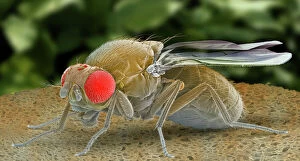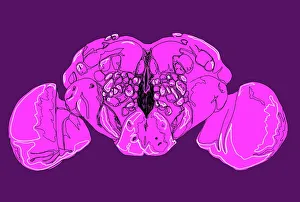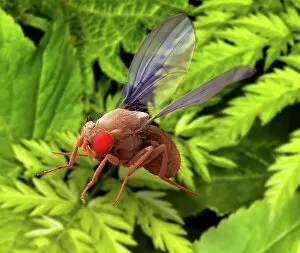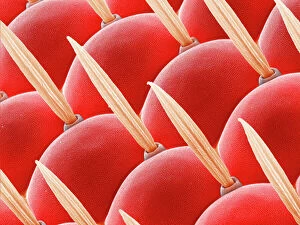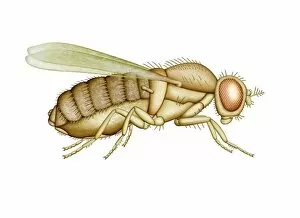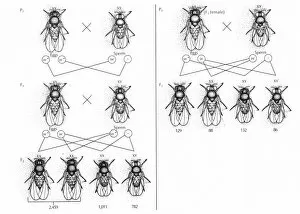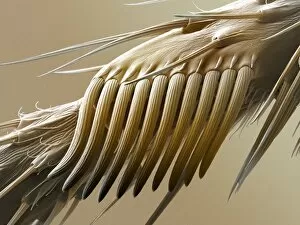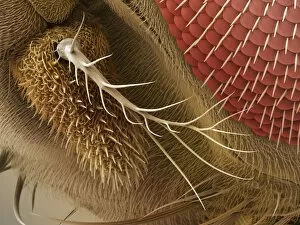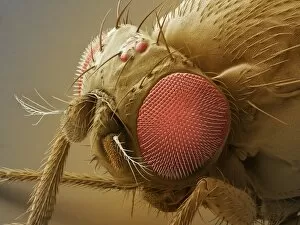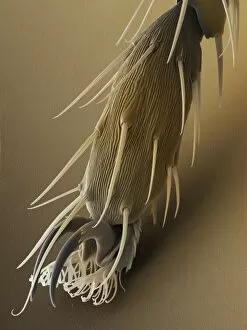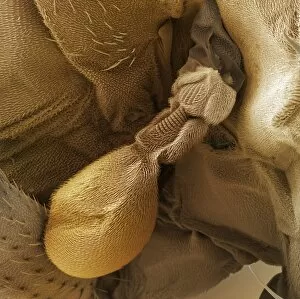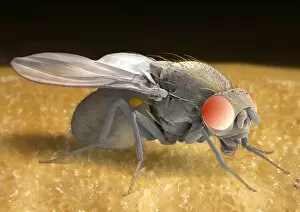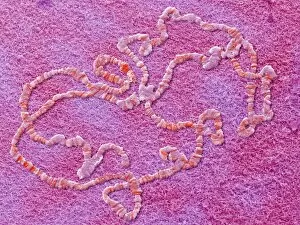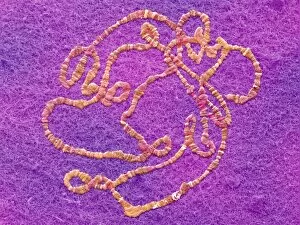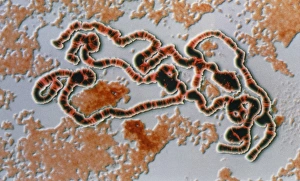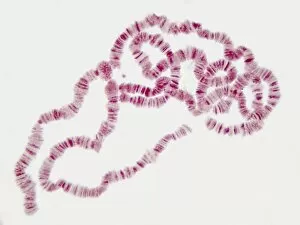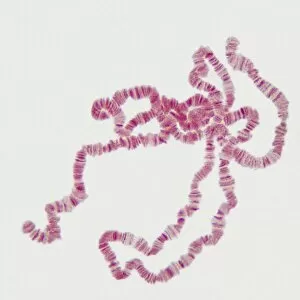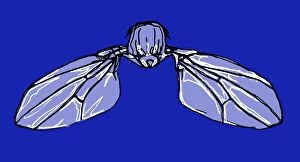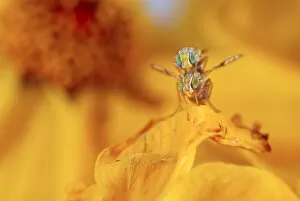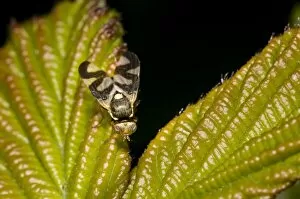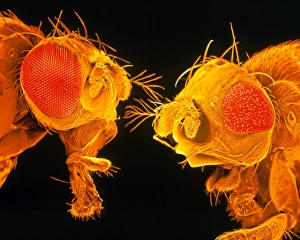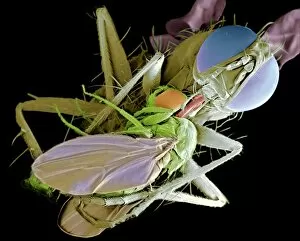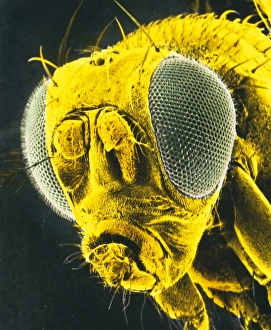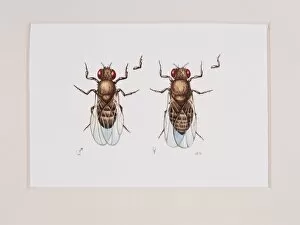Fruit Fly Collection
"Fruit Fly: A Tiny Marvel of Nature's Engineering" The fruit fly, scientifically known as Drosophila melanogaster
All Professionally Made to Order for Quick Shipping
"Fruit Fly: A Tiny Marvel of Nature's Engineering" The fruit fly, scientifically known as Drosophila melanogaster, is a fascinating creature that has captured the attention of scientists and researchers for decades. With its intricate features and remarkable abilities, this tiny insect continues to amaze us. Using the powerful SEM Z340 / 0768 microscope, scientists have been able to capture stunning images of the fruit fly. The SEM image reveals the intricate details of its body structure, showcasing its delicate wings and slender legs. In another SEM image, we get a closer look at its compound eye (SEM Z340 / 0698), which consists of thousands of individual lenses that allow it to see in multiple directions simultaneously. But it's not just their physical appearance that makes them intriguing; it's also their behavior. Fruit flies are known for their exceptional sense of smell and taste and can detect even the faintest aroma from decaying fruits or fermenting liquids from miles away. This ability has made them invaluable in scientific research related to olfaction and taste perception. In addition to their sensory prowess, fruit flies possess an astonishing brain capacity relative to their size. An illustration (C018 / 0791) depicts the complexity of a fruit fly's brain with various regions responsible for different functions such as memory formation and learning. Furthermore, these insects have played a crucial role in genetic studies thanks to Thomas Hunt Morgan's groundbreaking experiments on white-eye mutations (Diagram: INDO 20-07 189). His work with fruit flies laid the foundation for our understanding of inheritance patterns and genes. Another captivating feature is the sex comb found exclusively on male fruit flies' forelegs (SEM: Fruit fly sex comb). These specialized structures help males attract females during courtship rituals by releasing pheromones into the air. Despite being mere millimeters long, these small creatures hold immense significance in scientific research due to their short lifespan, rapid reproduction, and easily observable genetic traits.

